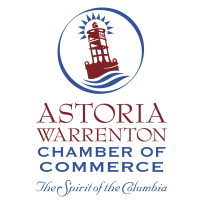Taking your business to the next level involves smart decisions, and switching from a sole proprietorship to an LLC is one of them. This shift not only protects your personal assets but also offers valuable tax benefits. As an entrepreneur, securing what you’ve built is essential, and this legal change does exactly that. It’s more than just a formal step—it’s a way to strengthen your business for future success. With this new structure, you gain the flexibility needed to grow with confidence.
Shielding Your Personal Assets with LLC Advantages
Shifting your business to an LLC provides crucial protection for your personal assets. An LLC establishes a legal separation between your personal and business finances, reducing the risk to your personal property in case of business debts or legal claims. If the business faces financial struggles, only the assets tied to it are at risk, not your personal belongings. Unlike sole proprietorships, this structure keeps your personal assets out of reach. It allows you to operate more confidently, knowing your exposure is limited to the business.
Exploring the Benefits of LLC Formation Services
Choosing an LLC formation service can offer significant advantages over hiring an attorney or filing on your own. Trusted and well-reviewed services like zenbusiness.com provide an expert-guided process, often at a fraction of the cost of legal fees. Beyond just filing paperwork, they streamline the complexities of forming an LLC and offer support to answer your questions, minimizing the risk of costly mistakes. They also provide timely alerts for critical deadlines, ensuring you stay on track with state requirements without the hassle of managing everything yourself.
Tax Flexibility: Comparing Sole Proprietorship and LLC
When it comes to taxes, understanding the differences between a sole proprietorship and an LLC is essential. As a sole proprietor, you report all business income and expenses on your personal tax return. While straightforward, this can sometimes lead to higher personal tax rates. On the other hand, an LLC offers more flexibility, allowing you to choose between being taxed as a partnership or opting for corporate taxation. This choice can lead to more favorable tax treatments under certain conditions. Additionally, LLCs often have the advantage of deducting startup and operating expenses in their first year
Navigating State Regulations for the LLC Transition
Each state has its own set of rules and requirements for converting a sole proprietorship into an LLC, making it crucial to understand your state’s specific guidelines. These regulations dictate the necessary paperwork, fees, and sometimes even require you to publish a notice in a local newspaper. By consulting state-specific resources, such as government websites or trusted legal service providers, you can gain a clear understanding of your obligations and ensure a smooth transition.
Meeting State Expectations for LLC Formation
A thorough understanding of your state’s requirements is a critical first step when forming an LLC. Each state has unique regulations, which might include registering a distinct business name, obtaining necessary permits, and setting up tax accounts. For example, California imposes a flat income tax if you choose corporation-style taxation, while most LLCs benefit from pass-through tax advantages. Missing filings can lead to hefty penalties, such as fines or even jail time, especially with new reporting requirements.
Clarifying Your Business Vision with an LLC Operating Agreement
Creating an operating agreement is vital when transitioning to an LLC. This document outlines your business’s objectives and the scope of activities it will undertake, providing both operational focus and legal clarity. Even if your state doesn’t mandate a detailed business purpose, a well-thought-out statement can help guide decision-making and set boundaries for your LLC. By clearly defining your business’s direction, you reinforce its identity and lay the groundwork for future growth and adaptability.
Smooth Transition Steps from Sole Proprietorship to LLC
As you convert your business structure, obtaining a new Employer Identification Number (EIN) is often necessary. This is because an LLC is a distinct legal entity, separate from a sole proprietorship in both legal and tax aspects. While a single-member LLC might not need a new EIN unless filing employment or excise taxes, ensuring your EIN reflects your new business structure is crucial for compliance. The process involves submitting the required form and documentation to the IRS, so planning ahead is wise.
Taking the step to transform your business from a sole proprietorship to an LLC is more than a mere formality; it’s a bold declaration of your vision for boundless growth and security. This pivotal transformation encapsulates not just legal protection and tax benefits, but the freedom to innovate without constraints. By fortifying your business structure with the robust shield that an LLC provides, you’re choosing a path that nurtures resilience and propels your entrepreneurial dreams into thriving realities.
Discover the vibrant business community of the Pacific Northwest with the Astoria-Warrenton Area Chamber of Commerce and unlock opportunities for growth.
